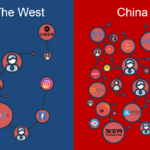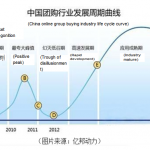Market Research China: identify trends in China
Market Research China: identify trends in China
[to see more about market research in Shanghai]FMCG Trends in China
China’s FMCG sector suffered a bit of a setback at the start of 2014, with a 1.3% drop in growth from 7.4% last year to 6.1% by end of Q1. Consultants suggests that the slowdown is due to decreased growth in household spending and the rise of average prices, but the overall trend in FMCG in China is less negative. Below are the results of market research conducted in China to provide an insight into the market and to identify trends in China, and suggestions to counteract them.
Chinese consumers are more willing to pay for premium

The steady rise in China’s GDP per capita, in comparison to the relatively sluggish European and American growth rates, has led to a consumer base that is more interested in paying for premium brands and goods. According to market research, in addition to prestige items like fashion accessories, the increased disposable income has resulted in many consumers upgrading their FMCG selection in circumstances where there is an obvious high-tier next step; for instance in food, beverage and personal care products. Overall, the Chinese market is becoming increasingly sophisticated, placing an increased emphasis on quality.
Premium trends: What to do about it?
n Identify trends and knowing your customer’s needs and purchasing patterns is even more important than before. As China’s premium brand consumption grows, companies must have concise research keeping them up to speed with their demands and brand experiences.
New trend for Healthy lifestyle products
In addition to becoming more quality-focused, the growing Chinese middle-class is becoming increasingly health conscious. Certain FMCGs like milk and baby products, while recent health scandals have devastated consumer trust in local brands, are seeing a willingness to pay higher for a safer product showed market research in China. Particularly in lifestyle products such as health care and cosmetics, consumers are looking more and more towards premium brands, and we identify a trend for imported ones.
Healthy lifestyle trend: What to do about it?
n Leveraging the Chinese desire for healthy products to achieve penetration requires informed branding and advertising. Companies should consider conducting focus groups and surveys to test a product’s impact on the market.
Market research in second and third-tier cities are showing greater growth
The slight dip in FMCG sales is mainly focused in the tier-1 cities such as Beijing and Shanghai. Market researches in Hangzhou, Qingdao or Jinan identified that the growth still remains high in second and third tier cities as disposable incomes there begin to rise. While still flagging behind the more sophisticated purchasing markets in tier-1 cities, the consumption trends remain similar. As secondary and tertiary cities continue to grow, market insight suggests consumption in those cities will begin mimic tier-1 cities.
Growing trend in second and third-tier cities: What to do about it?
n Increasing a brand’s footprint means establishing a wider network of distribution. Although FMCG purchasing trends in China may be similar across cities of similar tiers, there is still a significant divide between spending habits in different geographical locations; on-site market research is invaluable.
Distribution channels for foreign brands in China
The need to engage with and recruit customers at a base level has made the hands-off wholesale distribution model obsolete. In addition to the murky nature of Chinese wholesale, brand loyalty can no longer be maintained through the attractiveness of a foreign brand. Foreign companies especially need to be more proactive in converting customers and establishing contact at the point-of-sale. This requires a larger physical presence. However, online channels should not be ignored.
What to do about it?
n Market research, such as mystery shopping surveys, should be conducted to ensure that the consumer has a good first experience at the purchasing point to ensure penetration.
Ecommerce trend has taken off in China
Although market research showed that offline sales still dominate China’s market at nearly 97% last year, ecommerce has seen rapid growth even in Q1 2014, with 32% of households reported as having used an ecommerce site at least once in that period. Since FMCG are particularly popular among Chinese consumers, and consultants identify trend of reselling of foreign products, if foreign companies haven’t set up a means of selling their products directly on local ecommerce sites, it would be advisable to do so.
Ecommerce trend: What to do about it?
n Establishing an ecommerce shop is simple for an individual who is physically present in China. However, as online shopping habits vary, companies should analyze local competitors’ practice to identify the unique selling points that will recruit customers away from cheaper, local FMCG alternatives.
Local producers edging foreign companies out
Recent market research suggests that foreign companies are slowly losing share in China to local companies. In addition to weak brand presence, foreign companies are suffering from a lack of penetration due to unclear advertising campaigns and local alternative products. Although large brands such as Walmart and Carrefour can overcome this, and have remained roughly stable, overall loss is noticeable.
What to do about it?
n As was mentioned above, recruiting, converting and retaining customers is crucial. Considering the speed at which the Chinese market changes, local companies may have an edge in terms of market research in China, but foreign companies that put the effort into researching and establishing a dependable and trendy brand in China can expect to experience a degree of stability.
Daxue Consulting, Market research China
See also: mystery shopping Beijing
Sources:
http://www.kantarworldpanel.com/cn-en/news/2014-shopper-report
http://www.marketresearchworld.net/content/view/4950/77/
http://www.strategyand.pwc.com/media/file/Going_to_Market_in_China.pdf
http://www.chinadaily.com.cn/business/2014-04/17/content_17439873.htm















